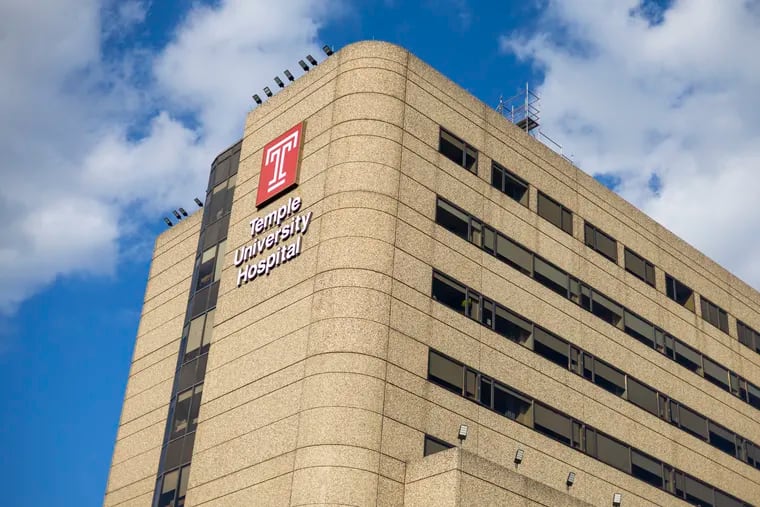Temple University Health System has adopted a new way of watching costs that allows it to tap into patients’ electronic medical records and track each drug and supply used in their care — down to the type of screw inserted in an ankle repair. Even the amount of time required to perform an imaging scan can now be tracked as a cost.
Such accounting sophistication has the power to bring more financial clarity to an industry notorious for its lack of price transparency. In health care, consumers have not been alone in their struggle to know what treatments and procedures cost. The people who manage immensely complex hospitals and health systems often have the same problem.
Temple’s system combines financial and clinical information in ways that allow managers to drill down on costs to treat patients with a particular diagnosis. They can then use that information to weed out excess costs, make more accurate budgets for existing and new programs, and better negotiate with insurers.
“It allows us to budget from reality,” Temple University Health System CEO Mike Young said of the computer program called PowerCosting, which the North Philadelphia nonprofit has been using since last year to comb through its operations looking for ways to be more efficient. As a safety-net provider mostly serving patients with low-paying government insurance for the poor and elderly, it’s crucial for Temple to be especially careful in how it spends money.
Historically, some doctors have pushed back against efforts to rein in expenses, when cost-cutting was seen as a threat to their clinical decision-making authority. But at a time when many health systems are losing money, due to the surge in labor and supply costs since the pandemic, financial leaders are looking for all the help they can get to be sure they are using their revenue in the most efficient way possible.
Temple’s cost-tracking system is intended to improve the quality of care, while also reducing costs, said Christopher Snyder, chief financial officer for Temple’s acute-care operations, who described it as “a tool that empowers the clinicians to make the best decisions for the patients.”
“It leaves them firmly in the driver’s seat of all clinical decisions, but informed of cost and variation,” he said.
Here’s a look at how Temple uses PowerCosting, which was developed by a company based in Utah called Health Catalyst Inc. Other local health system systems use different programs. For example, the University of Pennsylvania Health System uses Horizon Performance Manager.
Budgeting from reality
A key feature of PowerCosting is its ability to tally how much time a patient spends at each stage of care, enabling Temple to allocate labor costs more accurately. Compensation and benefits account for as much as 60% of health-care expenses at some systems.
That’s important for budgeting by department, Young said.
The time stamps allowed Temple to see that CT scans for neurological cases take two hours, for example, while the same scan for a broken hip takes just 20 minutes.
That means neurology should be allocated more labor costs for CT scans than orthopedics, Young said. In the past, the labor costs would have been divided equally, he said, and orthopedics would have borne more of the CT costs than it was responsible for.
Comparing physicians
Temple also uses the cost accounting system to compare patient outcomes and cost by physician. Such comparisons were more difficult under older systems, which involved arduous spreadsheet analysis.
The new system is much more efficient at identifying which doctor has the best clinical results, the shortest time in the operating room, or the lowest cost per case.
This includes the ability to break out, by diagnosis, what catheter the doctors are using, how long their patients are under anesthesia, and how long their patients are in intensive care unit, Young said.
If one surgeon’s costs are significantly higher than others, analysts drill down into why. Or if the surgeon’s cases are taking more time in the operating room, but has patients that are no sicker than the other surgeons’, analysts might find that the surgeon is showing up late, said Daniel del Portal, Temple’s chief clinical officer.
Analysis of supply costs is key to rooting out inefficiencies. One surgeon might like to have a special surgical instrument on hand, but it gets thrown away 90% of the time, del Portal said.
“Maybe we need to pull it off all of our trays and not waste the money,” he said.
Cost of delays in nursing home transfers
Temple has also used the PowerCosting system to quantify services it provides but is not reimbursed for.
That’s important for patients who are ready to be transferred to a nursing home, but cannot leave the hospital until their insurance company authorizes the move. Temple doesn’t get paid for those extra days of waiting.
Temple has found the scenario is particularly costly for patients on ventilators and getting dialysis, del Portal said. PowerCosting can show him exactly how much it is costing Temple, hour by hour, for that patient to be in a step-down pulmonary unit and getting dialysis.
“We can start to build that argument, hey, this is not generically costing hospitals money. Here’s the exact dollar figure that this costs — day by day, for every excess day in the hospital,” del Portal said.
Such delays have cost Temple reimbursement for roughly 3,000 days — $3 million — in the past year, Young said.
PowerCosting analysis helped Temple to address the issue, he said. Temple recently negotiated a deal with one unidentified insurer to get paid the nursing home rate for at least some of those previously unpaid days.

